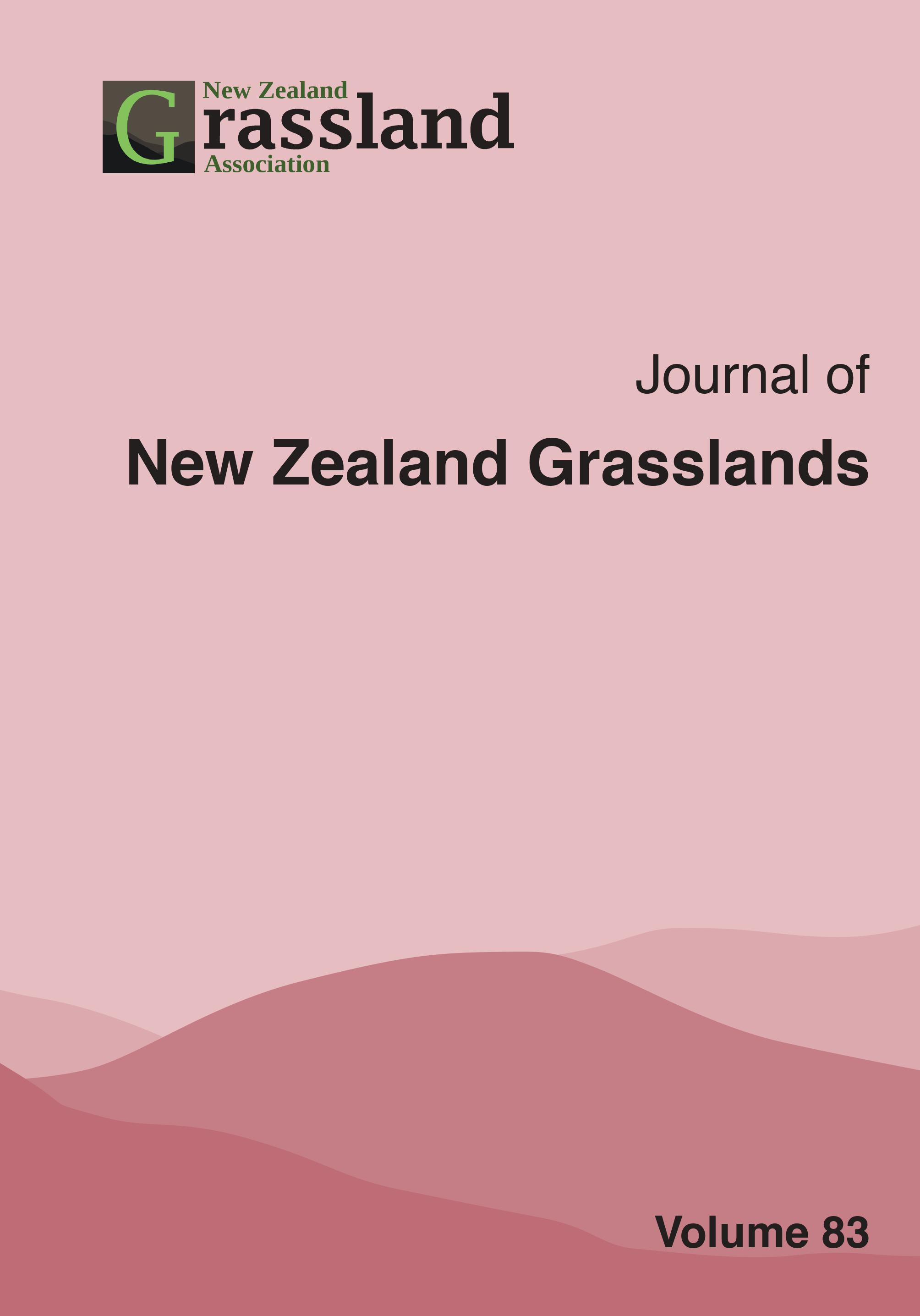Refining foliage sampling protocols for white clover
DOI:
https://doi.org/10.33584/jnzg.2021.83.3498Abstract
White clover (Trifolium repens) foliar ‘grab’ samples were taken pre-grazing from two irrigated experiments at Lincoln University at ~6 week intervals from August 2019 to May 2021. Clover leaves were divided into lamina and petiole before analysis. The results for nitrogen (N), phosphorous (P), potassium (K) and sulphur (S) foliar concentrations are reported.
While there were seasonal variations, N% and S% were consistently higher in the white clover lamina than the petiole, K% was mostly higher in the petiole, and P% was higher in the lamina during the winter/early spring period. With increasing clover sward height, the lamina to petiole DW ratio declined from 4, at a sward height of 5 cm, to 1 at 20 cm. The lamina+petiole sample had lower concentrations of N and S than lamina alone. Over time, foliar N% was relatively stable but concentrations of P, K and S showed ~ two-fold variation and may have been affected by low soil moisture.
The diagnosis of clover nutrient status should be based on lamina-only samples taken during spring, when plant growth is fastest, and just prior to grazing when there is sufficient herbage. Clover foliage sampling should routinely be used to inform fertiliser recommendations rather than relying on the development of visual symptoms of nutrient deficiency.
Downloads
Downloads
Published
How to Cite
License

This work is licensed under a Creative Commons Attribution-ShareAlike 4.0 International License.
Copyright
This work is licensed under a Creative Commons Attribution-Non Commercial-NoDerivatives 4.0 International License. Rights granted to the New Zealand Grassland Association through this agreement are non-exclusive. You are free to publish the work(s) elsewhere and no ownership is assumed by the NZGA when storing or curating an electronic version of the work(s). The author(s) will receive no monetary return from the Association for the use of material contained in the manuscript. If I am one of several co-authors, I hereby confirm that I am authorized by my co-authors to grant this Licence as their agent on their behalf. For the avoidance of doubt, this includes the rights to supply the article in electronic and online forms and systems.




